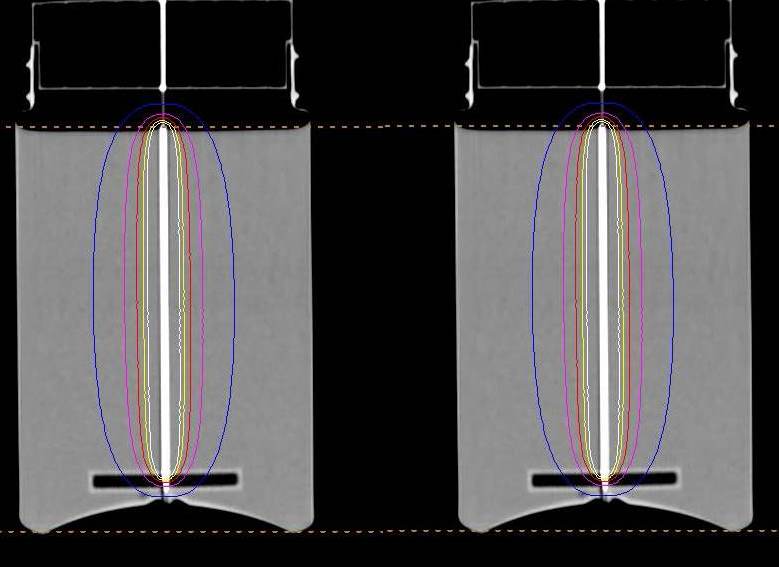Numerous challenges exist in radiotherapy due to the complexities of how it is planned and and the varying ways in which it is delivered to patients.
Planning a radiotherapy treatment usually starts with the acquisition of CT or MRI images of the patient, which are then transferred to a Treatment Planning System (TPS). The TPS then uses the information in the images in an algorithm which calculates the optimal arrangement of radiotherapy beams to target the tumour and spare surrounding healthy tissue.
Radiation therapy is typically delivered as a beam of high energy x-rays from a linear accelerator (known as external beam radiotherapy) or by direct placement of radioactive sources within the patient (known as brachytherapy).
In some cases, additional challenges arise. For example the breathing motion of a patient can present the tumour as a moving target for the radiotherapy beam and although radiotherapy has been safely delivered in these cases for over half a century, we are always looking to improve the targeting.
Likewise, new technology is providing enormous advancement in the ability of radiotherapy can physically target a tumour, and if we can understand all of the complexities of how the beam interacts we can make further improvements.
Many advancements in radiotherapy require specialist knowledge of how high energy particles interact with the world around them. The research undertaken at QUT covers a broad range of topics, all with the aim of improving the accuracy and precision of radiotherapy. Is is conducted in conjunction with hospitals and radiotherapy centres locally, nationally, and internationally.
Team
